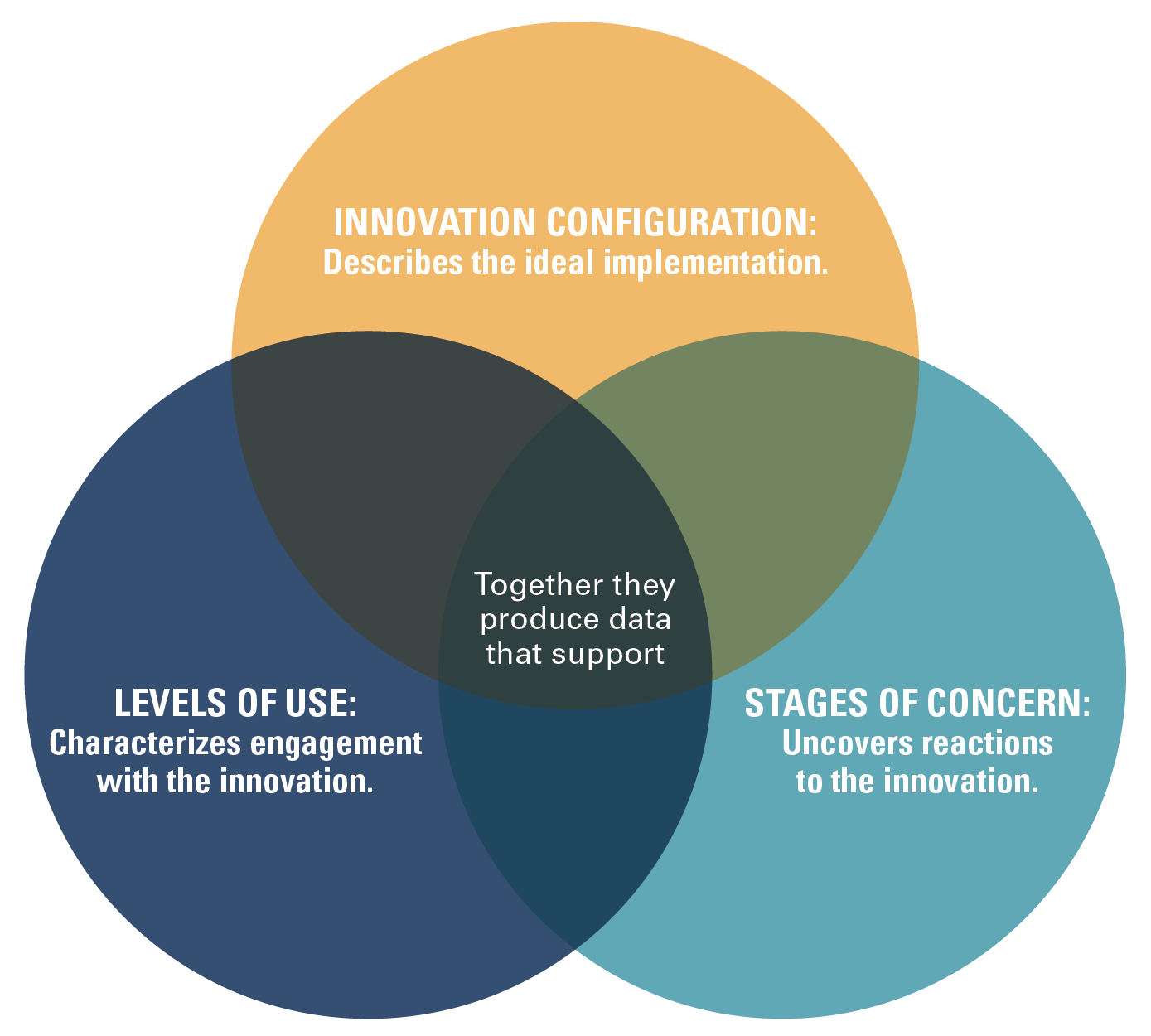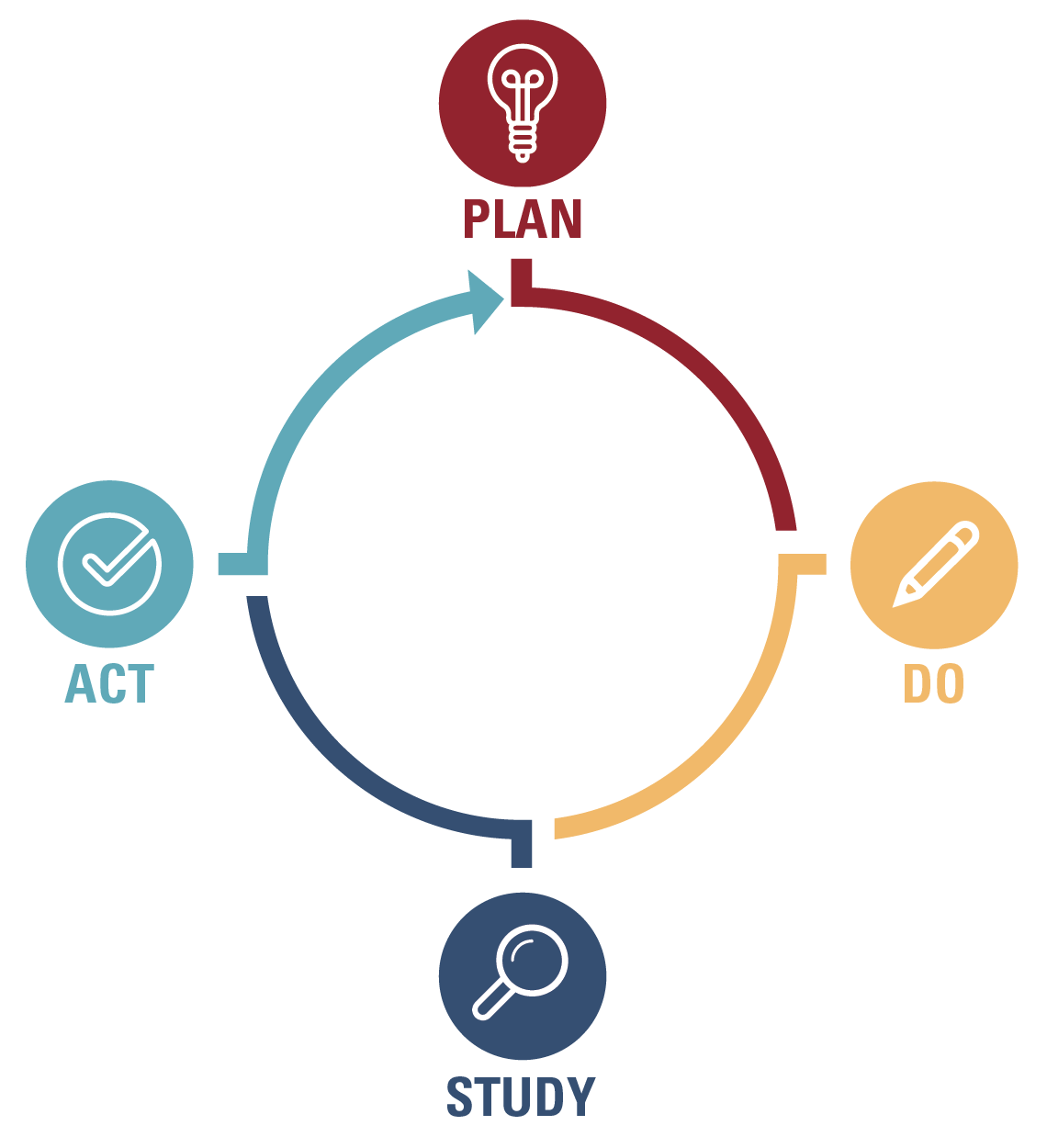Theories of Change
This Foundational Concept can be found in the following module pages:
- Leadership, Leadership Theories
This Foundational Concept provides brief overviews of four theories of change. These are: (1) the Concerns-based Adoption Model (CBAM), (2) Improvement Science, (3) Kotter’s Model of Change, and (4) Lewin’s Three-stage Change Model. It also points to another Foundational Concept that presents a fifth theory of change, Implementation Science.
Concerns-based Adoption Model (CBAM)
The human element is critical to the success of an initiative for change. People respond to change differently because they look at it from their own perspectives and in view of their own prior experiences. They also implement changes (e.g., the use of new tools, practices, and resources) differently. Responding to these insights about how people experience change, researchers at the University of Texas at Austin Research & Development Center for Teacher Education developed the Concerns-based Adoption Model (CBAM) in the 1970s and ‘80s. The model offers a conceptual framework that helps reformers navigate the human element as they work to implement new education programs and practices (Hall & Hord, 2015).
CBAM gives education leaders several strategies for implementing change in consideration of the concerns of school personnel. Uncovering these concerns helps leaders provide better support to those working on the front lines of reform, ultimately making the success of new initiatives more likely.
Three key ideas support this work: Innovation Configurations, Stages of Concern, and Levels of Use. Innovation Configurations give staff a roadmap to successful program implementation by presenting a model of what fully realized execution looks like. Attention to Stages of Concern helps leaders directly support staff depending on their readiness for change. Levels of Use measures allow leaders to determine how thoroughly staff members engage with a new practice or initiative.
Together, these three key ideas from CBAM enable change leaders to chart how staff members are engaging with change initiatives. Using these tools, leaders can better support their staff members and develop ways to help promote more effective implementation. The diagram below illustrates the interconnectedness of CBAM’s components.
The Three Key Idea in The Concerns-Based Adoption Model

Source: Adapted from American Institutes for Research (2015)
Implementation Science
This approach, which shares some key ideas with Improvement Science is described in its own Foundational Concept.
Improvement Science
Many education reform initiatives regularly fail to produce lasting improvements. The Carnegie Foundation for the Advancement of Teaching argues that such reforms are often not flexible enough to work across the variable contexts comprising the U.S. education landscape. This lack of flexibility makes it difficult to scale up improvement efforts. To address the issue, the Carnegie Foundation draws on lessons from the fields of industry and healthcare. Their model—Improvement Science—applies a scientific approach to the problems of educational improvement. It focuses on the complex nature of education systems and, in particular, their variability across contexts.
Improvement Science relies on disciplined inquiry and self-study carried out through Networked Improvement Communities (NICs). This system of disciplined inquiry involves rigorous measurement and data analysis. These practices enable those engaged in the improvement process to study their efforts while they are ongoing. Such self-study is done through iterative Plan-Do-Study-Act (PDSA) cycles (see the diagram below). Going through these cycles and making small changes based on feedback, enable improvers to adapt improvement initiatives to the local context and avoid large-scale failures. This approach helps interventions that are grounded in research and evidence to be more responsive (and therefore more likely to succeed) than one-size-fits-all types of reform.
Under many reform models, the identification of evidence-based practices and determinations about how to implement them come from researchers. The expectation is that practitioners will carry out what researchers prescribe. Improvement Science, in contrast, bridges the research-practice divide by locating improvement work within a community of practitioners. With this model, educators become improvement researchers. As researchers, they evaluate implementation as it occurs deciding what works within their own context, and what doesn’t. These practitioner-researchers join others (at other sites) in a network of improvers called a NIC. A NIC fosters cross-context learning, thus accelerating the improvement process. One school or district can learn from the experiences of another school or district and avoid their mistakes. A NIC enables research and development (R&D) work to be carried out across multiple contexts, thus making the work of scaling up easier. Diverse settings are more likely to provide answers to the many questions and problems that arise during implementation. Improvement Science adheres to six principles, listed below.
Plan-Do-Study-Act Cycle

Source: Adapted from Grunow (2015)
- Make the work problem-specific and user-centered.
- Focus on variation in performance.
- See the system that produces the current outcomes.
- We cannot improve at scale what we cannot measure.
- Use disciplined inquiry to drive improvement.
- Accelerate learning through networked communities. (Bryk et al., 2015, pp. 172-3)
Improvement Science also bears some similarity to another new reform strategy: Collective impact. Collective impact holds that large-scale reform is not possible with the efforts of individuals alone. Such reform requires collaboration between many individuals and groups across different sectors.